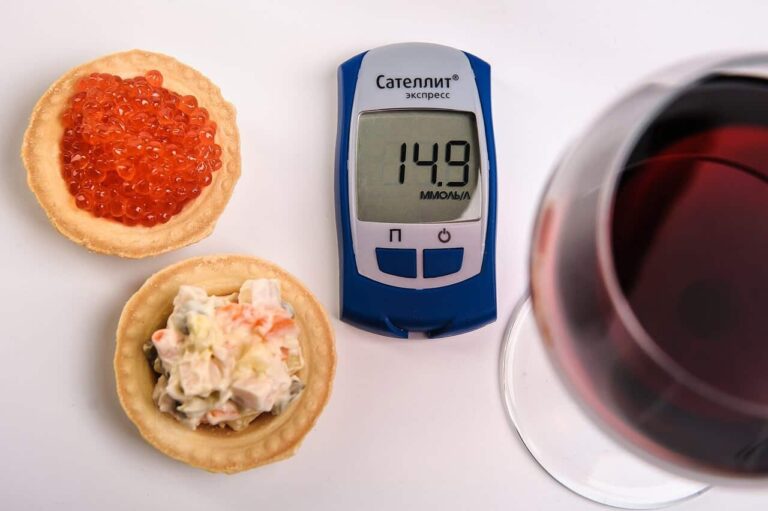Scroll through any diabetes community online, and you’ll find them. The Keto Warriors. The Low-Carb Crusaders. The staunch advocates who post screenshots of perfectly flat CGM lines, crediting their success to one simple mantra: cut the carbs.
The low-carb lifestyle has become the unofficial holy grail of modern blood sugar management. It promises stability, lower insulin doses, and freedom from the dreaded glucose rollercoaster. And for those of us living with Type 1 Diabetes, who wouldn’t want a piece of that?
But amidst the hype and the butter coffee, a nagging question remains: Is low-carb always better? Is a life without bread, pasta, and the occasional piece of birthday cake the only path to a good A1c?
Let’s break this down without judgment, carb-shaming, or cult-like devotion. Because the truth isn’t black-and-white. It’s more like… cauliflower rice. It works wonders for some, and for others, it’s just a sad substitute for the real thing.
A Quick Disclaimer: I’m your content manager, a T1D navigating the food world. I am not a registered dietitian or a doctor. This is an exploration of different eating patterns, not a prescription. Your nutritional needs are unique. Please consult your healthcare team before making significant dietary changes.
Decoding the Lingo: What Does “Low-Carb” Even Mean?
“Low-carb” is a broad term. What one person considers low-carb, another might see as a carb-heavy day. To bring some clarity, here’s a general framework of daily carb intake:
| Eating Pattern | Approx. Daily Carbs | The Vibe & Typical Foods |
| Very Low-Carb / Ketogenic | < 50 grams | The “Carbs are Lava” approach. Meat, fish, eggs, cheese, oils, nuts, leafy greens. |
| Low-Carb | 50 – 130 grams | The most common range for T1Ds seeking carb reduction. Includes the above + berries, some legumes, non-starchy veggies. |
| Moderate-Carb | 130 – 225 grams | The “Quality over Quantity” path. Focuses on whole grains, fruits, starchy vegetables, and legumes. |
| Standard / High-Carb | > 225 grams | A typical Western diet. Includes pasta, bread, rice, sugary drinks, etc. |
For the purpose of this guide, we’ll consider anything under 130g/day as being on the “low-carb” spectrum.
The “Pros”: Why People with T1D Fall in Love with Low-Carb
There’s a reason low-carb has such a devoted following. The benefits can be profound and life-changing.
- Flatter CGM Lines (The Holy Grail): This is the biggest selling point. The logic is simple: fewer carbohydrates entering your system means less glucose to manage, which naturally leads to fewer dramatic spikes and crashes. It turns a volatile stock market into a more predictable savings bond.
- The Freedom of Smaller Doses: When you’re eating fewer carbs, you need less mealtime insulin. This isn’t just about using less medication; it’s about reducing the margin for error. A small miscalculation on a 3-unit bolus is far more forgiving than on a 10-unit bolus. This can significantly reduce the frequency of “oops, I over-bolused” hypoglycemic events.
- Increased “Time in Range” (TIR): For many, the stability from a low-carb diet translates directly to more time spent in their target blood sugar range. This is a key metric for long-term health and a huge boost for mental well-being.
- Reduced “Food Noise” and Better Weight Management: Many people find that a diet higher in fat and protein keeps them fuller for longer, reducing cravings and the constant mental chatter about the next meal. This can also be a powerful tool for managing insulin-related weight gain.
The “Cons”: Why Low-Carb Isn’t a Universal Magic Wand
Despite the glowing testimonials, the low-carb path is not without its pitfalls. It’s crucial to be honest about the potential downsides.
- The Energy Drain for Active Lifestyles: If you’re an athlete, a runner, or someone with a physically demanding job, severely restricting carbohydrates can feel like trying to drive a car with an empty gas tank. Carbs are your body’s most accessible source of fuel for high-intensity efforts.
- The Risk of Nutritional Gaps: Cutting out entire food groups like fruits, legumes, and whole grains can make it challenging to get enough fiber, vitamins, and minerals. A well-formulated low-carb diet requires careful planning to avoid deficiencies.
- The Social & Psychological Toll: This is the big one that’s often ignored. Birthday parties, pizza nights, holidays, travel… these social rituals are deeply intertwined with food. A strict low-carb diet can lead to feelings of isolation, anxiety, and a strained relationship with food. Sometimes, the mental burden of being “different” can outweigh the benefits to your blood sugar.
- The Ketone Conundrum (DKA Risk): For T1Ds, this is a serious consideration. On a very low-carb diet, your body naturally produces ketones for energy. This is nutritional ketosis, and it’s generally safe. However, if you also reduce your insulin doses too much (especially basal insulin), you risk tipping over into Diabetic Ketoacidosis (DKA), a life-threatening condition.
Finding Your “Sweet Spot”: It’s Not a Diet, It’s a Dial
So, is low-carb always better for Type 1 Diabetes? Perhaps that’s the wrong question. A better question is: “What is the right amount of quality carbohydrates for my body and my life?”
Think of it not as a switch you flip, but as a dial you can adjust. Maybe you’re more low-carb on sedentary workdays but strategically add more carbs around your workouts. Maybe you find that 80g a day is your sweet spot for stability and satisfaction.
The goal is to find a sustainable middle path. Ask yourself:
- Is this way of eating reducing my anxiety or increasing it?
- Do I have stable energy throughout the day?
- Am I enjoying my food, or do I feel deprived?
- Is my Time in Range improving?
- Am I trading physical health for mental anguish?
Final Thoughts: Your Diet, Your Rules
The low-carb vs. moderate-carb debate can feel like a religious war in the diabetes community. Don’t get caught in the crossfire. There is no moral superiority in eating fewer carbs.
The “best” diet is the one that allows you to achieve your health goals (good A1c, high Time in Range) while also living a life that feels joyful, flexible, and sustainable. For some, that’s a 30g/day ketogenic plan. For others, it’s a 150g/day whole-foods approach.
Carbohydrates are not the enemy. They are just a variable in a very complex equation. Your mission is to find the formula that works for you. Use your data, listen to your body, and give yourself permission to turn the dial until you find your own personal holy grail.
The ADA and other diabetes associations do not officially recommend a low-carb or keto diet for everyone with T1D, instead emphasizing individualized nutrition.











